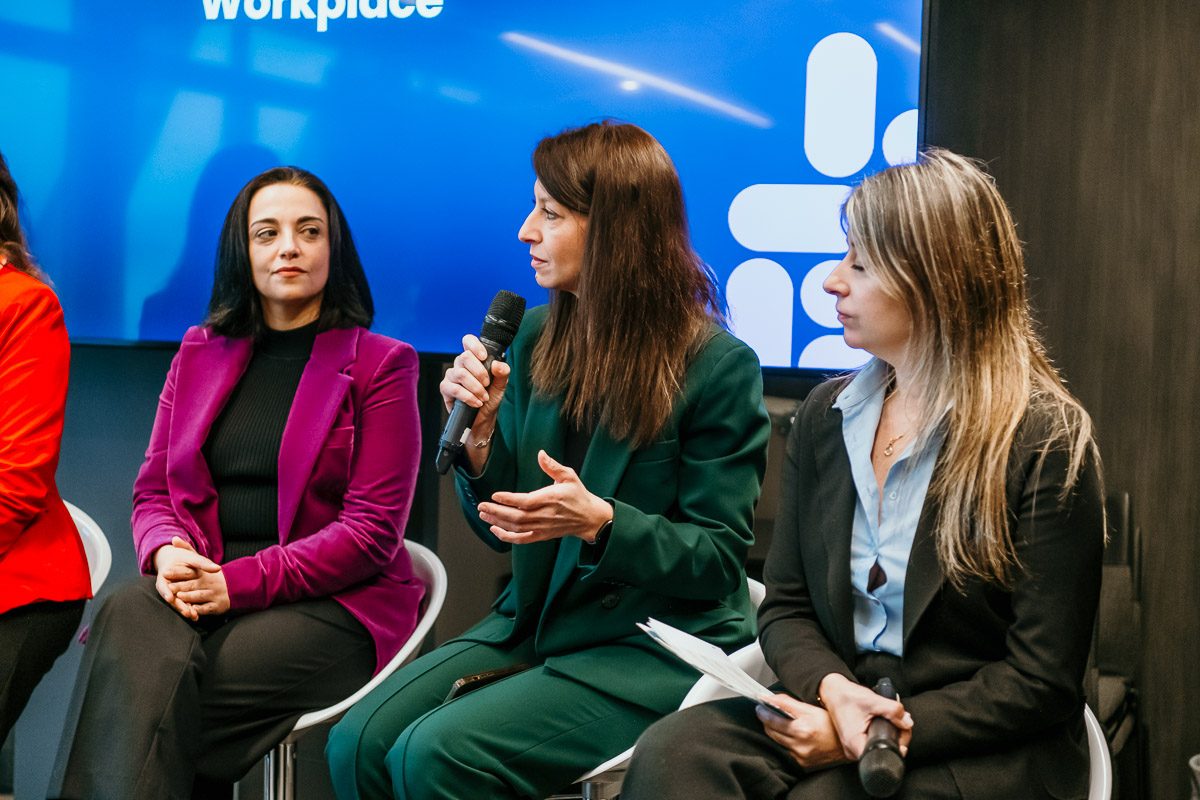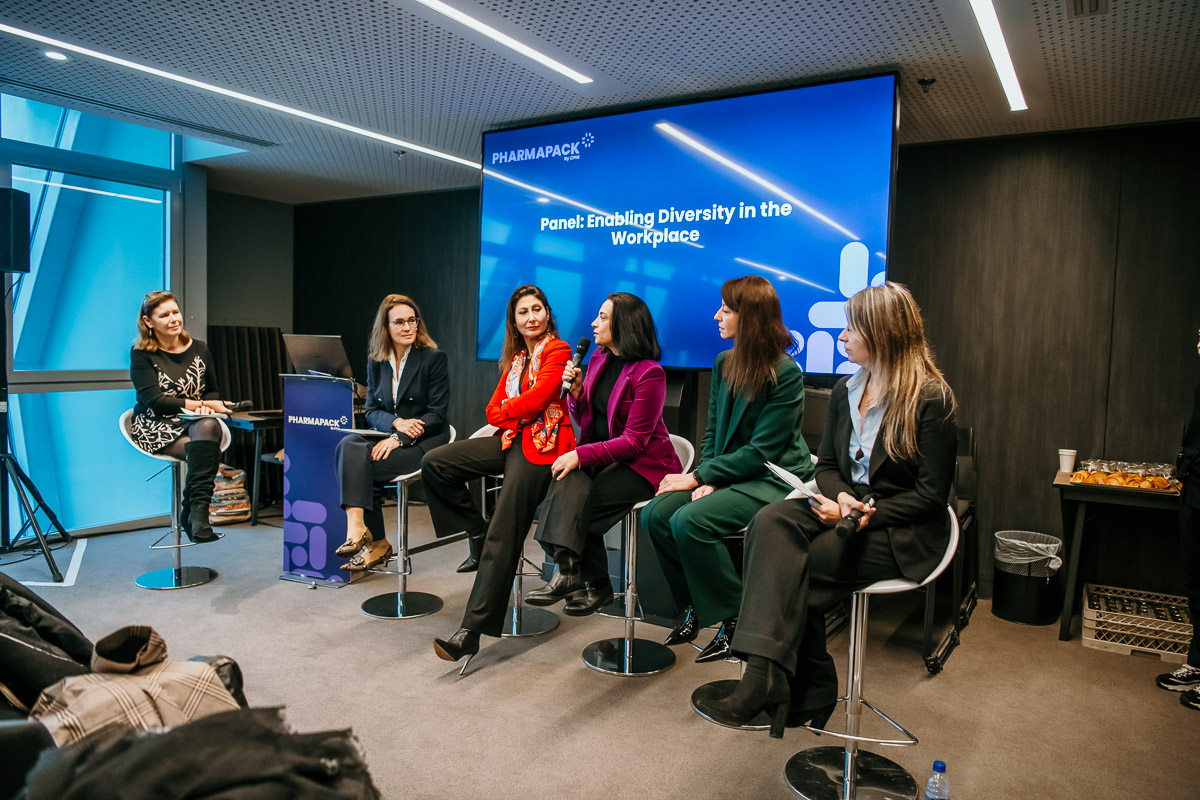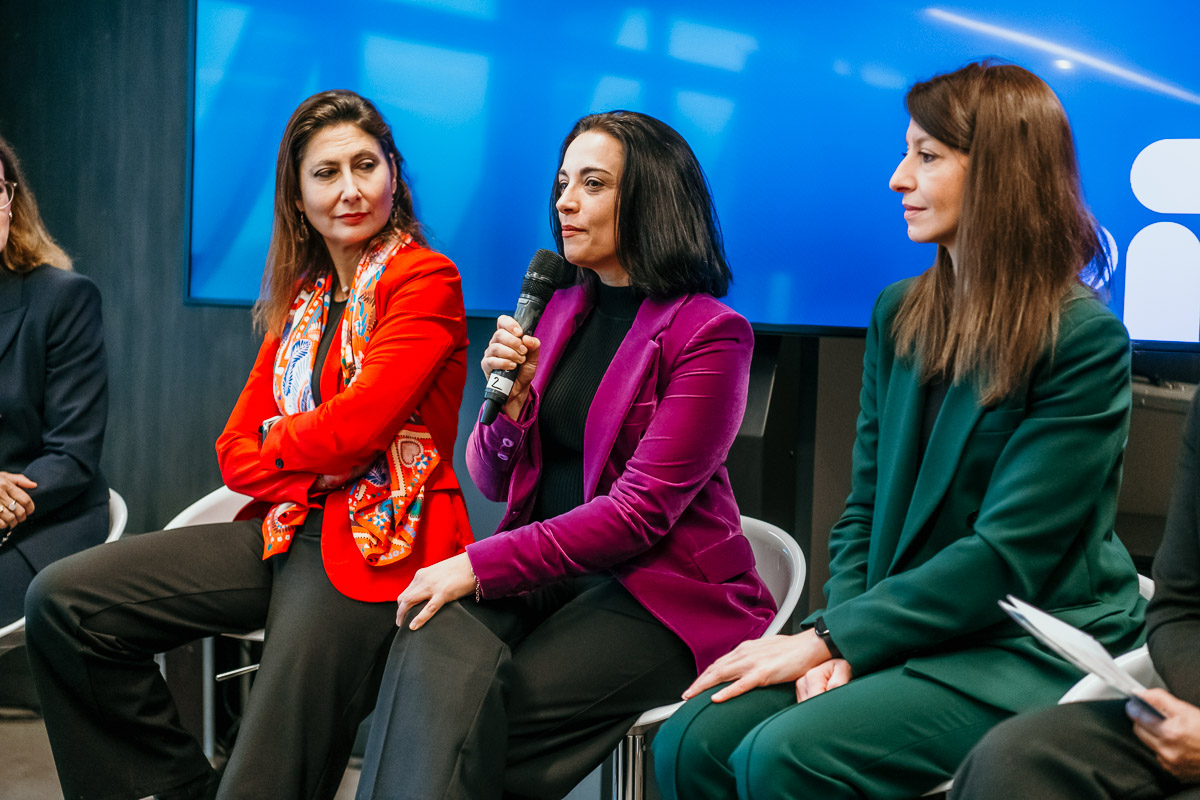Women in Pharma: Minding the Gap at Pharmapack 2024
.png)
2024 marks the first year Pharmapack will host a Diversity track dedicated to bridging the gap within the pharmaceutical packaging and drug delivery sector. The track includes a panel discussion on 'Enabling Diversity in the Workplace,' focused on gender equity in pharmaceutical packaging.
The speakers on this year’s panel include:
Elizabeth Guitart, Head of HR International at Merck Group
Amira Ghozali, Aptar Pharma
Dora Carrasco Sabino, CEO & Co-founder at Blazar
Diane Melul, Sanofi
Manuela Herrlein, Managing Partner and Co-founder at Alpine One
Helena Demuynck, Leadership Coach at Oxygen4Leadership (moderator)
Gender parity in pharmaceutical packaging
Kicking off the discussion, Demuynck asks where we are regarding gender equity within the pharmaceutical industry. Statistics presented by Herrlein demonstrate that in the pharmaceutical industry, gender parity in the workforce is almost achieved in some of the top companies, including AstraZeneca, Pfizer, Merck, and Sanofi. However, the female workforce in the pharma packaging sector lagged woefully behind. Even worse, there exists a greater divide of women in executive positions at top pharma packaging companies. In her keynote address, Herrlein discussed the need to recognise whether some types of sectors are more attractive or inclusive of women than others. These statistics set the stage for an empowering discussion on continuing to recognise biases even while celebrating advances in gender equity.
Strategies for minding the gender gap
Ghozali explains how her company implemented unconscious bias training for all, “men, women, and neutral-gender persons. As a woman, I could have unconscious bias even towards myself. The idea is to be aware of it and how I can address it first for myself and then the people I work with.” Demuynck agrees - “I think awareness and training is very important for all, and especially the inclusion of men.”
 Reflecting on the steps taken by Merck, as the first pharmaceutical company to introduce a female CEO, Guitart states that “In 2021, we started to monitor a strong assessment about gender payment equity, analysing ten of the largest countries in which we operate. We detected a gender payment equity gap of less than 1.5% - much better considering the current 16% benchmark but we still wanted to address this gap. Now, we are taking measures and repeating this analysis every single year. We have detected again some unexplained gaps in the countries where we have a workforce such as in India, Brazil, or China, and we adjust regularly.”
Reflecting on the steps taken by Merck, as the first pharmaceutical company to introduce a female CEO, Guitart states that “In 2021, we started to monitor a strong assessment about gender payment equity, analysing ten of the largest countries in which we operate. We detected a gender payment equity gap of less than 1.5% - much better considering the current 16% benchmark but we still wanted to address this gap. Now, we are taking measures and repeating this analysis every single year. We have detected again some unexplained gaps in the countries where we have a workforce such as in India, Brazil, or China, and we adjust regularly.”
The issue of measuring and tracking performance to tackle these gender pay gaps remains a challenge for those implementing DE&I measures. “How do you measure performance and track it,” asks Herrlein. “We really incorporate reflecting on if our decisions are biased. Once a week as a team, we talk very openly about this because I believe transparency is very important to address bias.” Ghozali adds that for those in the industry developing these strategies for gender equity, creating resources and spaces for employees can bring the transparency required to achieve parity: “We have an employee resource group (ERG) named ALIGN, which stands for Aptar, Lead, Inspire, Grow, Now. Everything is in the title. I was part of the leadership team for this ERG and the challenge was how do we roll out this group across all regions with 13,000 employees – and the include men, women, and gender-neutral in these groups?... we articulated five pillars addressing several points in this ERG and while it was very challenging, we launched in March 2021 and we had almost 2000 people online... with this structure, we have to be able to keep up the momentum to be able to discuss what can be a very difficult topic.” 
Strategies for Sabino are similar within the sectors of engineering, machine-learning, and AI for pharma, though she questions the success of such actions with constraints from the company. “We had a job description for an AI lead and in the first two days we had 104 applicants – only four were women. My head engineer told me that I need to call all these women to the interviews. I said ‘but there is a gap in their skills’ and my head engineer said ‘it doesn’t matter, call them all’. That taught me something, which is that you are screening through an uneven opportunity landscape... these fields have been male-dominated for decades but with all these new opportunities and advancements, there are more and more women coming in. This also taught me that it is not going to be easy to implement gender parity but when we interviewed these women, they had certain personality particularities – they were perseverant, and would fully admit that they were underqualified, but they also stated they had the potential to learn. In the end, we went with a more senior candidate but kept one of the women interviewed as a consultant. Is it fair? Is it not fair? There was the constraint of the needs for the company and we needed to act, but it taught us strategies we will implement in future hirings to implement our posts, advertise them in networks of female professionals and be visible to these communities.”
Women supporting women (and others)
Creating a female-centric community, where women support each other, is another strategy the panel agrees must be a priority. “For Sanofi, we’ve been on a journey that’s been very much supported by top management,” Melul comments. “We have a CIO, which takes a special lead for our digital embrace of women, teaching women early enough that they can reach these positions. We’re losing women early on, at the school level, so we really engage ourselves with schools and young girls. We explain to them a role model in technical or digital jobs. Starting at the beginning as early as possible is one part to closing this gender gap... there are fewer women applying for jobs because they do not trust themselves... trusting yourself is the first step. The next step is having that mentoring, coaching, and learning experiences within the company, for both men and women.” Guitart summarises: “If you’re not intentional with your strategy, nothing is going to happen.”
Melul also takes into account the role of men in achieving gender parity. “I think in the end, gender balance must go through men, not women. They need to enter our worlds... we don’t have to change we just have to be more inclusive... men are going on paternity leave now, so employers, when hiring, they aren’t thinking only a woman has the potential to go on parental leave.”
Retention is the new recruitment
Talent retention has been a constant source of pressure for all companies, but especially for those looking to retain women in positions at a higher level. “What has happened in the last 2 years after the pandemic?” Guitart asks. “We’ve seen huge resignation rates and we wanted to understand what happened. We analysed our data and we realised that newer generations are leaving the company within the first two years... we invested in training, onboarding but still people are deciding to leave. We were not only seeing this pattern in new generations but also with senior leaders. We’ve started doing focus groups and exit groups... and we found that at the start of the pandemic, we were onboarding many people remotely. Employees, especially new generations, felt disconnected from the company... looking at women, especially those in senior leadership positions, they were clear about their dissatisfaction – they said they were unsure about what is next in their careers at the company.” Herrlein agrees: “I think it’s important to conduct these exit interviews in a transparent and open way with these women to then support the women still in your workforce.” Demuynck states it best: “Retention is the new recruitment.”
 Sabino also highlights the importance of including those who have been in the workforce longer into the conversations about equity and balance. “I see with the new generations these ideas [of equality] are ingrained in them, men and women. So the question now is how can we include these generations that were raised professionally during a different time? They are as crucial in a team – older men, older women – this generational mix will give all companies a good result and success. Diverse means everything. It’s about gender balance and also a generational balance. We all need each other for mentoring, support, and retrospect.”
Sabino also highlights the importance of including those who have been in the workforce longer into the conversations about equity and balance. “I see with the new generations these ideas [of equality] are ingrained in them, men and women. So the question now is how can we include these generations that were raised professionally during a different time? They are as crucial in a team – older men, older women – this generational mix will give all companies a good result and success. Diverse means everything. It’s about gender balance and also a generational balance. We all need each other for mentoring, support, and retrospect.”
One-word summary
Demuynck ends the discussion with an open question to the panelists: “In one word, can you get to the essence of what the key mindset is that brought you to where you are now?” Ghozali’s starts with “Resilience”, while Guitart adds “Empowerment”. Enjoyment, capabilities, and self-belief are included by Sabino, Melul, and Herrlein respectively.
Catch-up on all things Pharmapack 2024 with our From the Floor blog.
Related News
-
News More to celebrate at the CPHI Milan Pharma Awards 2024
The CPHI Milan Pharma Awards, which are now open for nominations until 18 May 2024, celebrate the innovators making a difference. This year, two new categories have been added to further honour the contributions of a diverse range of pharma professiona... -
News First offers for pharma from Medicare drug price negotiations
Ten high-cost drugs from various pharma manufacturers are in pricing negotiations in a first-ever for the US Medicare program. President Biden’s administration stated they have responded to the first round of offers. -
News The 2024 Pharma Outsourcing Forecast: strategic partnerships across global landscapes
For the pharmaceutical industry, outsourcing drug development, manufacturing, and research operations to contract organisations is not just a passing trend – increasingly, the partnership between drug sponsor and drug vendor is one of vital impor... -
News Gerresheimer predicts weight-loss drug deals to account for 4% of yearly growth
Dietmar Siemssen, CEO of German primary packaging manufacturer Gerresheimer, states that approximately 4% of the company’s revenue growth each year to come from deals with drugmakers of weight loss and diabetes products, particularly GLP-1 class ... -
News Novel approach to creating sustainable packaging from rice husks
Researchers have created a new approach to the designing of eco-friendly nanofibres extracted from rice husks, addressing the critical need for sustainable packaging materials in food and biopharmaceutical products. -
News Eli Lilly’s Zepbound makes leaps and bounds in weight-loss drug market
In the last week, Eli Lilly has announced their partnership with Amazon.com’s pharmacy unit to deliver prescriptions of Zepbound. Zepbound has also surpassed Novo Nordisk’s Wegovy for the number of prescriptions for the week of March 8.&nbs... -
News Coronary drug-coated medical device receives US FDA approval
Boston Scientific announced the FDA approval of their medical device AGENT Drug-Coated Balloon (DCB) for the indication of coronary in-stent restenosis in coronary artery disease patients. -
News CPHI Online Webinar Series – Innovative Strategies for B2B Pharma Marketeers
On February 20, 2024, CPHI Online hosted a webinar on Innovative Strategies for B2B Pharma Marketeers. Featuring expert speakers from across the pharmaceutical value chain, this webinar delves into how B2B pharma marketeers can create better content to...
Position your company at the heart of the global Pharma industry with a CPHI Online membership
-
Your products and solutions visible to thousands of visitors within the largest Pharma marketplace
-
Generate high-quality, engaged leads for your business, all year round
-
Promote your business as the industry’s thought-leader by hosting your reports, brochures and videos within your profile
-
Your company’s profile boosted at all participating CPHI events
-
An easy-to-use platform with a detailed dashboard showing your leads and performance

.png)
.png)
.png)
.png)
.png)
.png)
.png)